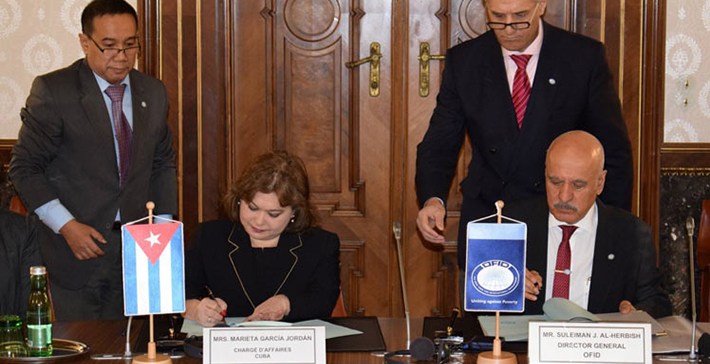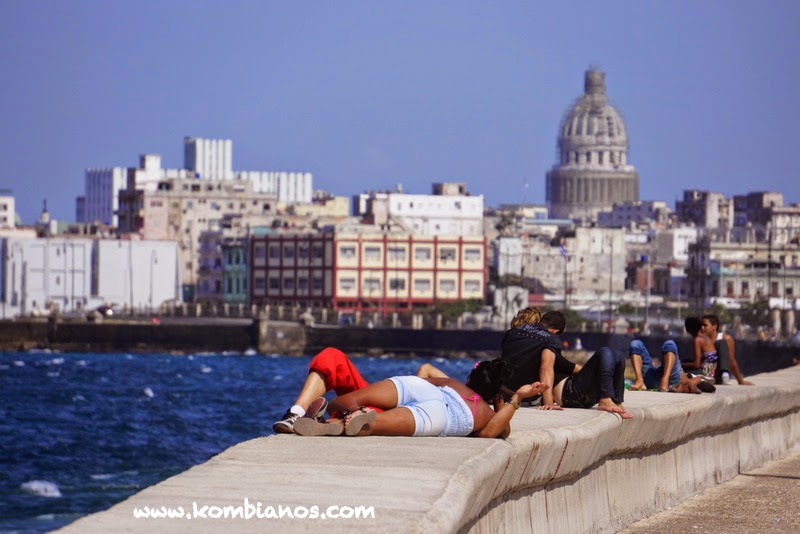 UNTIL OCTOBER 2018, CUBA HAS RECEIVED FINANCING FROM OPEC FOR MORE THAN $253 MILLION.
UNTIL OCTOBER 2018, CUBA HAS RECEIVED FINANCING FROM OPEC FOR MORE THAN $253 MILLION.
The Government of Cuba has been receiving funding from the Fund of the Organization of Petroleum Exporting Countries (OPEC) for International Development for more than 17 years. Apart from humanitarian donations sent to the island, the Cuban government has received loans amounting to 253.50 million dollars to carry forward 14 projects, according to the organization itself on its website. They are updated data until October 5, 2018.
OPEC has prioritized loans in Latin America and the Caribbean to three countries that today have ideological similarities. Bolivia ($276.10 million), Cuba ($253.50 million) and Nicaragua ($230.50 million) are the great beneficiaries of their money in the region. Devastated countries such as Haiti have only obtained $90.78 million loans from OPEC. The last one, in 2009.
The bulk of the money received by Cuba from the Organization of Petroleum Exporting Countries has gone to water and sewage works (133, 50 million dollars); followed by electricity or renewable energy ($77 million) and finally agriculture ($43 million). Havana and Las Tunas are the provinces that have benefited the most, at least on paper.
But that is not the only form of collaboration between Cuba and OPEC. The organization founded by Saudi Arabia, Kuwait, Iran, Iraq and Venezuela has made available to the Cuban government at least since 2001, subsidies for humanitarian aid or to finance transfers of Cuban doctors to Africa.
This type of subsidies have continued to arrive on the island for years. On December 13, 2004, OPEC (through OFID, its Development Fund) approved a $100,000 grant to restore 79 buildings in Old Havana, where 175 families lived, apart from 23 other homes in the city. Bethlehem neighborhood. The agreement was signed by former Foreign Minister Felipe Pérez Roque, fired since them.
On February 6, 2015, they again donated another $400,000 to Cuba. This time for the Government of Raul Castro to send a group of doctors from the island to Sierra Leone, Liberia and Guinea to fight Ebola.
The first of the major collaborative projects between OPEC and Cuba dates back to just 2002: sanitation works in municipalities that discharged their sewage into the Almendares River in Havana. OPEC put 10 million dollars.
On April 2 of this year, the foreign minister of Saudi Arabia (member country of OPEC), Adel al-Jubeir, met in Havana with his Cuban counterpart, Bruno Rodríguez, and with the former Minister of Economy, Ricardo Cabrisas, who addressed the issue of reaching a possible agreement for the supply of oil. The next day Raúl Castro received al-Jubeir when he only had a few days left to leave the Presidency of Cuba.
Cuba maintains mission doctors in Saudi Arabia, a country accused by the United States, of financing jihadist terrorism in Syria and Iraq according to El País, has granted several credits to the Island: $80 million came from the Saudi Development Fund; another $50 million in export of Saudi products to Cuba and $29.1 million to finance infrastructures in the hydraulic sector of the Caribbean country. In 2007, they had granted another loan of $26 million to the Office of the Historian of the City of Havana.
 HASTA OCTUBRE 2018 CUBA HA RECIBIDO FINANCIACIÓN DE LA OPEP FOR $253 MILLONES.
HASTA OCTUBRE 2018 CUBA HA RECIBIDO FINANCIACIÓN DE LA OPEP FOR $253 MILLONES.
El Gobierno de Cuba lleva más de 17 años recibiendo financiación del Fondo de la Organización de Países Exportadores de Petróleo (OPEP) para el Desarrollo Internacional. Aparte de donaciones humanitarias enviadas a la Isla, el Gobierno cubano ha recibido préstamos que ascienden a 253,50 millones de dólares para sacar adelante 14 proyectos, según recoge la propia organización en su página web. Son datos actualizados hasta el 5 de octubre de 2018.
La OPEP ha priorizado en América Latina y el Caribe los créditos a tres países que hoy tienen similitudes ideológicas. Bolivia (276,10 millones), Cuba (253,50 millones) y Nicaragua (230,50 millones) son los grandes beneficiarios de su dinero en la región. Países devastados como Haití, sólo han conseguido de la OPEP préstamos por 90,78 millones. El último de ellos, en 2009.
El grueso del dinero recibido por Cuba de la Organización de Países Exportadores de Petróleo ha ido a obras de agua y alcantarillado (133, 50 millones de dólares); seguido de las de energía eléctrica o renovable (77 millones) y finalmente agricultura (43 millones). La Habana y Las Tunas son las provincias que más se han beneficiado, al menos sobre el papel.
Pero ésa no es la única forma de colaboración entre Cuba y la OPEP. La organización fundada por Arabia Saudita, Kuwait, Irán, Irak y Venezuela ha puesto a disposición del Gobierno cubano al menos desde 2001, subvenciones en concepto de ayuda humanitaria o para financiar traslados de médicos cubanos a África.
Este tipo de subvenciones han seguido llegando a la Isla durante años. El 13 de diciembre de 2004, la OPEP (a través de la OFID, su fondo para el Desarrollo) aprobó una ayuda de 100.000 dólares destinada a restaurar 79 edificios de La Habana Vieja, donde vivían 175 familias, aparte de otras 23 casas en el Barrio de Belén. El convenio fue firmado por el excanciller Felipe Pérez Roque, hoy cadáver político.
El 6 de febrero de 2015, nuevamente donó otros 400.000 dólares a Cuba. Esta vez para que el Gobierno de Raúl Castro enviara un grupo de médicos de la Isla a Sierra Leona, Liberia y Guinea a combatir el ébola.
El primero de los grandes proyectos de colaboración entre la OPEP y Cuba se remonta justamente a 2002: las obras de saneamiento en municipios que descargaban sus aguas albañales en el río Almendares de La Habana. La OPEP puso 10 millones de dólares.
El 2 de abril de este año, el canciller de Arabia Saudí (país miembro de la OPEP), Adel al-Jubeir, se reunió en La Habana con su homólogo cubano, Bruno Rodríguez, y con el exministro de Economía, Ricardo Cabrisas, que abordó el tema de alcanzar un posible acuerdo para el suministro de petróleo. Al día siguiente Raúl Castro recibió a al-Jubeir cuando apenas le quedaban unos días para dejar la Presidencia de Cuba.
Cuba mantiene médicos de misión en Arabia Saudí, país acusado por EE.UU. de financiar el terrorismo yihadista en Siria e Irak, según publicó El País, ha concedido varios créditos a la Isla: 80 millones salieron del Fondo Saudí para el Desarrollo; otros 50 millones en concepto de exportación de productos saudíes a Cuba y 29,1 millones para financiar infraestructuras en el sector hidráulico del país caribeño. En 2007, había concedido otro préstamo de 26 millones a la Oficina del Historiador de la Ciudad de La Habana.
Agencies/ CIberCuba/Tania Costa/ Extractos/ Internet PHotos/ Arnoldo Varona/ TheCubanHistory.com
THE CUBAN HISTORY, HOLLYWOOD.







